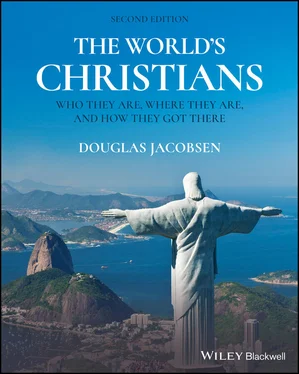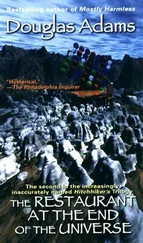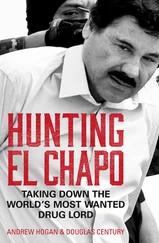Along with confessionalism and pietism, rationalism emerged as another major Protestant sub‐movement during these years. This was the era of the Enlightenment, when intellectual elites were convinced that reason was the only guide for intelligent living, and Protestant rationalists sought to reform Protestantism by applying reason to both historical Protestant beliefs and to the Bible itself. While they continued to reference the Bible as an important source of insight, Protestant rationalists thought there was much to learn from other sources of knowledge, including the study of the natural world and logic. Seventeenth‐ and eighteenth‐century rationalists like John Locke and Thomas Jefferson favored a moralistic (as opposed to doctrinal) understanding of the life and teachings of Jesus, and the legacy of the movement lives on today in a broad variety of Protestant thinkers who emphasize reason and science in their theological reflection on Christian faith. While Protestant rationalists thought they were advocating a form of Christianity that was universal and that transcended differences of race, culture, and gender, most scholars today see Protestant rationalism as a quintessentially white, western, and male way of thinking.
Protestant missions and the challenges of modernity, 1800–1950
Before 1800 very few Protestants had an interest in global missions. After 1800, the evangelization of the world became a central Protestant concern. The publication of William Carey’s book, Enquiry into the Obligations of Christians to Use Means for the Conversion of the Heathens (1792), was one trigger that helped to spur the modern Protestant missionary movement. Before Carey’s book, the common assumption was that God would redeem “the heathen” when God decided to do so, and God would do that without any human assistance. Carey argued that instead of passively waiting for God to act, Protestants should energetically “use means” (intelligent strategizing and planned action) to spread the gospel around the world. This new missionary vision reflected Protestantism’s slide toward Arminianism, but it was also encouraged by the modern notion that society can be changed by human effort (in contrast to the older view that human social relations were largely fixed and inflexible). A third trigger for Protestant global missions was Europe’s heightened awareness of the world’s cultural and religious diversity. This consciousness was sketchy, often inaccurate, and frequently condescending, but it led Protestants in the West to see the rest of the world as in need of help and assistance.
The modern Protestant missionary movement helped to spread Christianity around the world, and it also had a major impact on the institutional structure of Protestantism. Up until 1800, most of Protestantism was housed in churches, and most of those churches were government‐controlled state churches. Protestantism’s new passion for missions gave rise to an entirely different kind of institutional structure: the trans‐denominational (or non‐denominational) voluntary association. These associations were not churches, they were not organized into congregations, and their main purpose was not worship. Instead, they were organized around one particular Christian purpose. Examples include the London Missionary Society (begun in 1795) and the American Board of Commissioners for Foreign Missions (1810). Later examples would include groups like the American Anti‐Slavery Society (1833) and the Women’s Christian Temperance Society (1874). These voluntary Protestant parachurch organizations tended to be theologically inclusive, espousing Protestant Christianity in general, and they drew support from individuals belonging to a variety of different denominations. They also gave women, who were denied ordination by most Protestant denominations, new opportunities for leadership within the movement.
During the same time that Protestantism was spreading confidently and rapidly around the world, it was increasingly being challenged “back home” in Europe and North America. Questions came from new ideas emerging in science (Darwinian evolution), from new thoughts about society and economics (Marxism), from new views of human psychology (Freudianism), and from new interactions with other cultures. Social developments within the western world, including the end of slavery, the industrial revolution, western colonialism, new forms of communication, and the rise of modern medicine, were also forcing Protestants to rethink some of their beliefs and practices. Protestant “modernists” generally viewed these new ideas and social developments in the best light possible, as offering new ways to improve Christianity and to cleanse it from the faulty and old‐fashioned ways of thinking it had accumulated over the centuries. Protestant “fundamentalists” viewed these developments more defensively, seeing them as attacks on the core principles of Protestantism and biblical Christianity. Tensions between the more liberal and more conservative wings of Protestantism, which emerged in the early twentieth century, have divided the movement ever since.
The contemporary period, 1950 to the present
Since 1950 the worldwide dynamics of Protestantism have changed once again. Protestantism has become global, and most of its growth has occurred in the southern hemisphere. Protestant theology has also been reshaped by new ideas contributed by women, people of color, and other previously disenfranchised groups. Protestantism has always been a movement in motion, but the pace of change has accelerated and the diversity of the movement has expanded enormously during the last seventy‐five years.
At present, there is a major global divide within the Protestant world between Ecumenical Protestantism on the one hand and Evangelicalism on the other. The word “ecumenical” comes from a Greek word meaning “one house” or “one household,” and the main goal of Ecumenical Protestantism, which seemed attainable in the mid‐twentieth century when ecumenism was at its peak, was to gather all the world’s Christians into one large, unified household of faith. Ecumenical Protestantism developed out of the missionary movement when the proliferation of Protestant churches seemed to impede the effective communication of the gospel to previously unreached people. The relatively minor differences across the churches of Europe and America appeared meaningless or irrelevant in many global settings, but those differences often caused confusion among people who were hearing the gospel for the first time. These concerns eventually led to the creation of the World Council of Churches (WCC) in 1948, a largely Protestant organization dedicated to championing “the visible unity of all Christians.”
The World Council of Churches and the Ecumenical Movement have been highly successful in helping many Protestant churches develop a deeper sense of commitment to and cooperation with each other. The movement has also expanded its vision of what ecumenism entails. Especially during the last fifty years, concerns about peace, justice, human rights, and reconciliation – issues that focus on treating everybody in the world fairly and equally – have become increasingly prominent within the WCC. In the mid‐twentieth century, Ecumenical Protestants supported a number of liberationist movements around the world, including the Civil Rights movement in the United States and the anti‐apartheid movement in South Africa. More recently, ecumenical activists have focused their attention on issues related to gender and sexual orientation, encouraging churches to become more welcoming of LGBTQ members and ministers. Perhaps ironically, pursuit of these justice‐oriented goals is now having an anti‐ecumenical impact within Protestantism, dividing churches along divergent ideological lines. Partly for this reason, the term “ecumenical” is now used less frequently, and the word “progressive” has become the more common label for this Protestant sub‐group.
Читать дальше












